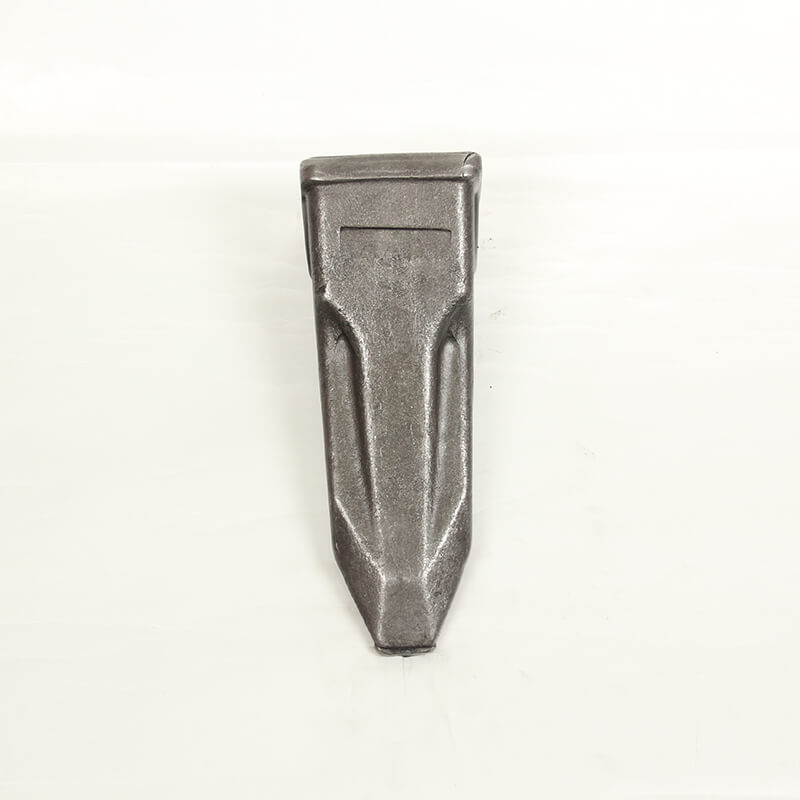

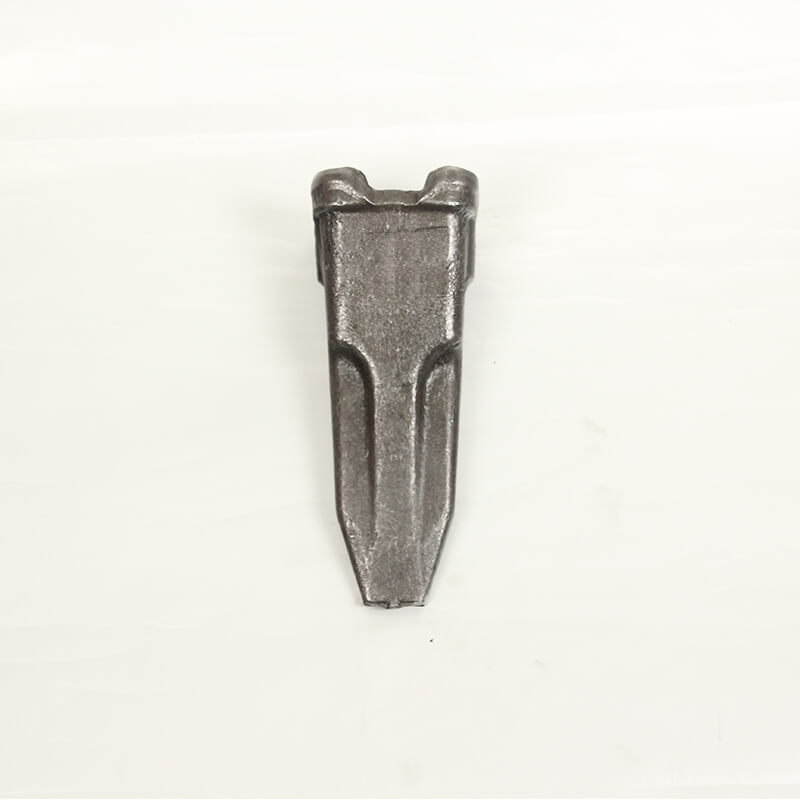
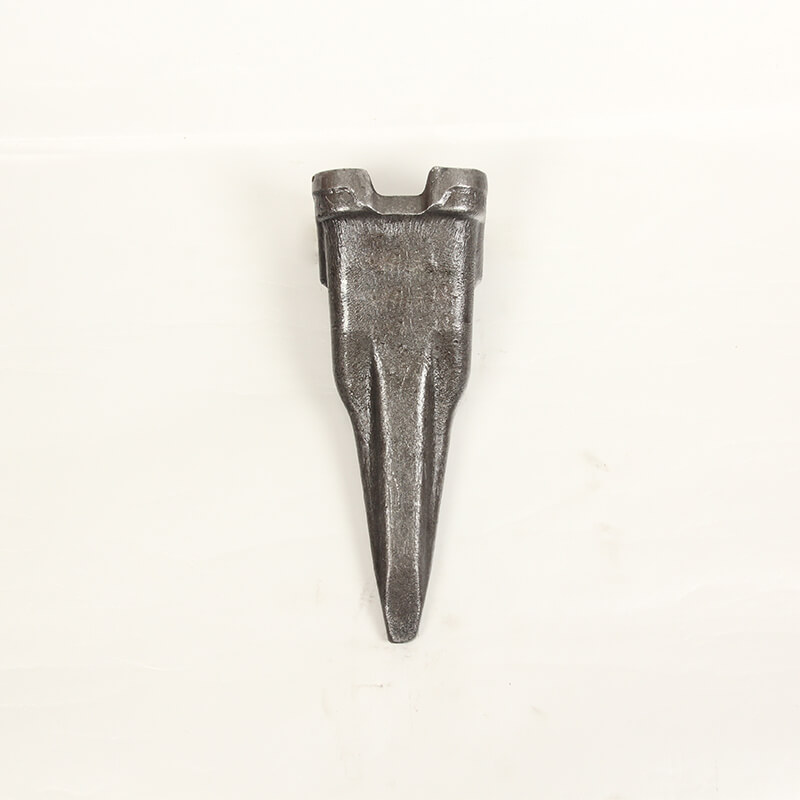
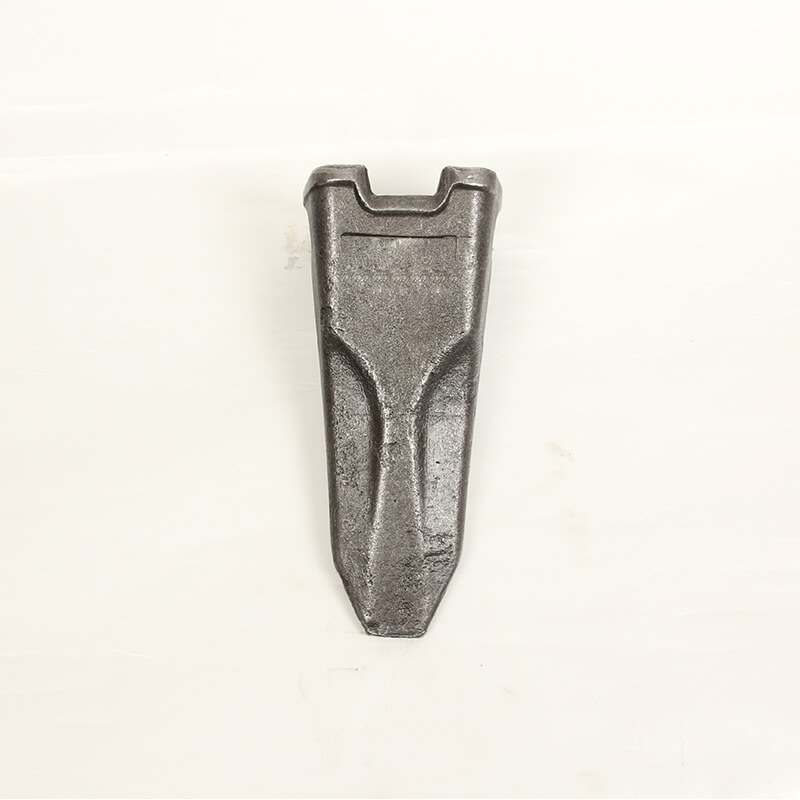
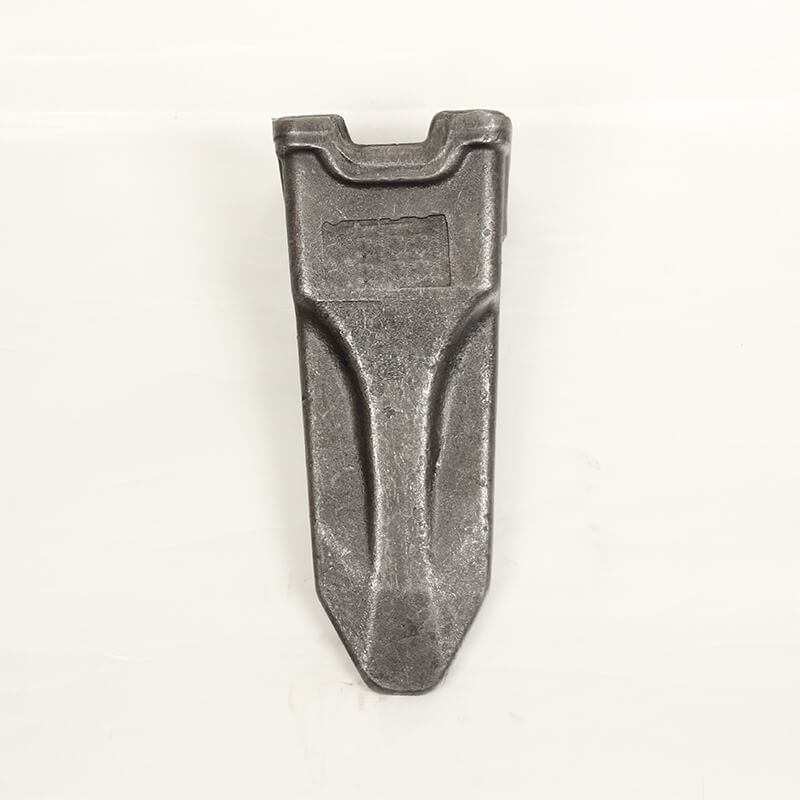
Because the composite material of high manganese and alloy steel has strong toughness, it can be surfacing welded on the surface of a wear-resistant alloy with very strong hardness, so that the surface strength of the bucket tooth is greatly improved, so as to obtain a more ideal bucket tooth. Because of the strong principle in the drought-resistant treatment process, the surfacing alloy with high hardness and good wear resistance should be selected in the material.
According to related research findings, high-yield cast iron alloys have stronger wear resistance than high-manganese steel materials. When manufacturing new bucket teeth and repairing old bucket teeth, high-yoke iron alloys or martensite are used. Cast iron alloy. In the repair process, the old bucket tooth tip can be cut with acetylene flame, leaving a certain groove, and then using austenitic steel manganese electrode to make corresponding treatment to the original shape, and finally stacking the surface Welding treatment improves the wear resistance of large mining excavators.
When the bucket teeth act on rocks (ores) under high impact loads, on the one hand, they contact with the surface of the rocks (ores) to produce a greater impact force. If the yield strength of the bucket tooth material is low, the tip of the bucket tooth will produce a certain amount of force. Plastic deformation, easy to form plastic deformation furrow. On the other hand, when the bucket tooth is inserted into the rock (ore), if the hardness of the bucket tooth is lower than the hardness of the rock (ore), the rock (ore) particles will be pushed into the surface of the bucket tooth, which will produce curved or spiral long chips. The formation of cutting grooves may be accompanied by micro-cutting chips. Chips deform a lot due to the shearing action, generate a lot of latent heat of deformation, appear tight and neatly arranged sliding steps, and form wrinkles. In addition, the friction between the chips and the rock (ore) generates friction heat, the combined effect of latent heat of deformation and friction heat The chip temperature rises sharply, dynamic recrystallization, tempering softening, dynamic phase change, etc., change the internal structure of the chip, and some partial melting occurs.
The bucket teeth are inserted into the rock (ore) for reciprocating motion, and the plastic furrow formed on the surface is rolled by the rock particles on the uplifting parts multiple times to form a metal multi-flow platform. When the stress on the bucket tooth material exceeds the strength limit Cracks will be cracked and broken into debris. The debris cracks perpendicular to the direction of wear, and the other is cracked or torn off along the direction of wear. The front is smooth groove stripes, the back is relatively flat, and the sides are overlapping stripes formed by rolling deformation. If the rock has edges and corners, it will shear the deformed layer to form debris, which is flat and thin with rough edges. In another case, when the bucket teeth and the rock repeatedly act, the bucket teeth produce plastic deformation and cause high work hardening, which increases the brittleness of the bucket tooth surface. Under the strong impact of the rock, the bucket tooth surface will become brittle. Cracked debris, with radial cracks of different depths on the surface. Strictly speaking, this embrittlement feature is also a fatigue spalling mechanism.
The wear failure mechanism is related to the material and working conditions, mainly including cutting, fatigue spalling and other mechanisms. Generally speaking, the cutting mechanism dominates the wear failure process of bucket teeth, reaching more than 70; as the hardness of the bucket teeth increases, the fatigue spalling mechanism gradually increases, accounting for 2O~3O; when the hardness of the material reaches the upper limit, the brittleness increases , Brittle fracture may occur. For working conditions where the cutting mechanism is the mainstay, increasing the hardness of the bucket tooth material is conducive to improving its wear resistance; for the fatigue spalling mechanism, the material is required to have good hardness and toughness; high hardness, high fracture toughness, and low cracks Expansion rate and high impact fatigue resistance are all conducive to improving the wear resistance of the material.
